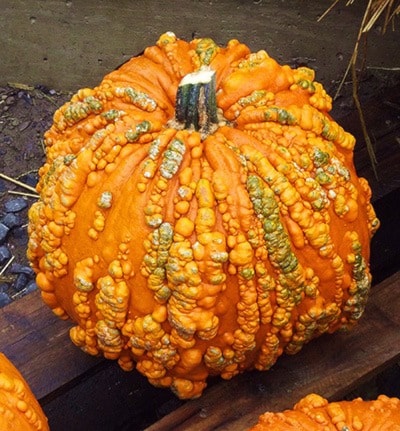In honour of Halloween, I thought I would put together a list of superstitions associated with plants, many of which have been with us for centuries and are still regarded to this day.
While I’m not expecting too many true believers out there, you might be surprised by how much this folklore still permeates our everyday life.
• Jack-o-lantern pumpkins – carved pumpkins (or turnips) with scary faces originated in Ireland, where they were used to frighten away wandering evil spirits on the pagan holiday of Samhain, which was eventually Christianized as All Hollow’s Eve, or Halloween.
• Autumn leaves – catching a falling leaf before it hits the ground or having the wind blow them into your house are both portents of good fortune. Catching a falling leaf on Halloween will also allow you to make a secret wish come true (except if you’re wearing a Stephen Harper costume).
• Garlic (Allium sativum) – garlic cloves are widely regarded as an effective repellent of evil spirits and vampires. Legend states that the first garlic bulb arose in the spot where the Devil’s left foot trod when he walked out of the Garden of Eden.
• Acorns (Quercus spp.) – placing an acorn on a windowsill will protect your house against fire or lightning strikes, this tradition goes back to a Norse legend about Thor, who was sheltered from a thunderstorm by a massive oak tree.
• Ivy (Hedera helix) – the English believe that bringing ivy inside as a houseplant is asking for trouble, while it is considered good luck to grow it outdoors. The two exceptions to the latter are when it suddenly dies for no apparent reason or it is plucked from a church wall – both of which will bring bad luck.
• Daffodils (Narcissus spp.) – be careful when looking for that first daffodil of spring, because if the flower nods or ‘hangs it head’ towards you, you will have bad luck for the rest of the year.
• Elderberry (Sambucus nigra) – standing beneath an elderberry bush in midsummer will allow you to see or communicate with fairies and elves (so you really can live out that Lord of the Rings fantasy).
• Parsley (Petroselinum crispum) –is said to only grow well outside the house of an honest man and giving it away will bring misfortune.
• Monkey puzzle tree (Araucaria araucana) – an old English tradition dictated that monkey puzzle trees be planted on the edge of graveyards to keep the devil from climbing them and watching the burials on sacred ground.
• Apple (Malus spp.) – leaving a single apple on a tree after harvest can go either way – it can be considered as a peace offering to pagan harvest spirits but if it remains on the branch until spring, then someone from the family who owns the tree will perish shortly.
• Rosemary (Rosmarinus officinalis) – is said to grow best outside a home where a matriarch resides and the bush often dies when that person passes or moves away.
• Hens and chicks (Sempervivum spp.) – it is good luck to have houseleeks or hens and chicks growing on the outside walls, roofs or anywhere in close proximity to the home – they are also said to protect from fire and lightning strikes.
Well I hope you enjoyed my list of superstitious plants. Just remember there is only one holiday a year when perfect strangers can dress up, walk the streets at night and knock on your door to ask for goodies – the only catch being that it all ends with your teenage years – so for all you ‘oldies’ out there, happy Halloween, anyways.
Mike Lascelle is a local nursery manager and gardening author (hebe_acer@hotmail.com).
